If you’re getting antsy about starting harvest or wondering when to start harvest, a great use of your time would be scouting your crop. Checking for insects and disease is important throughout the growing season, but just before swathing is the best time to assess the impacts of blackleg, sclerotinia, alternaria and clubroot. Or to see if you have any unusual diseases like verticillium wilt. Did you make the right management decisions earlier in the year? To distinguish one disease from another, use these discerning traits:
o Blackleg: Look for tiny round specks of pycnidia within a grey or tan coloured lesion that may be seen on the first image. On stems, blackleg lesions can be quite variable, but are usually found at the base of the stem or at points of leaf attachment and may be observed where physical damage has occurred.
Then use clippers! Severe infection usually results in a dry rot or canker at the base of the stem and can be seen on the cross-section of the stem once the base of stem/top of root are clipped, as in the second image.
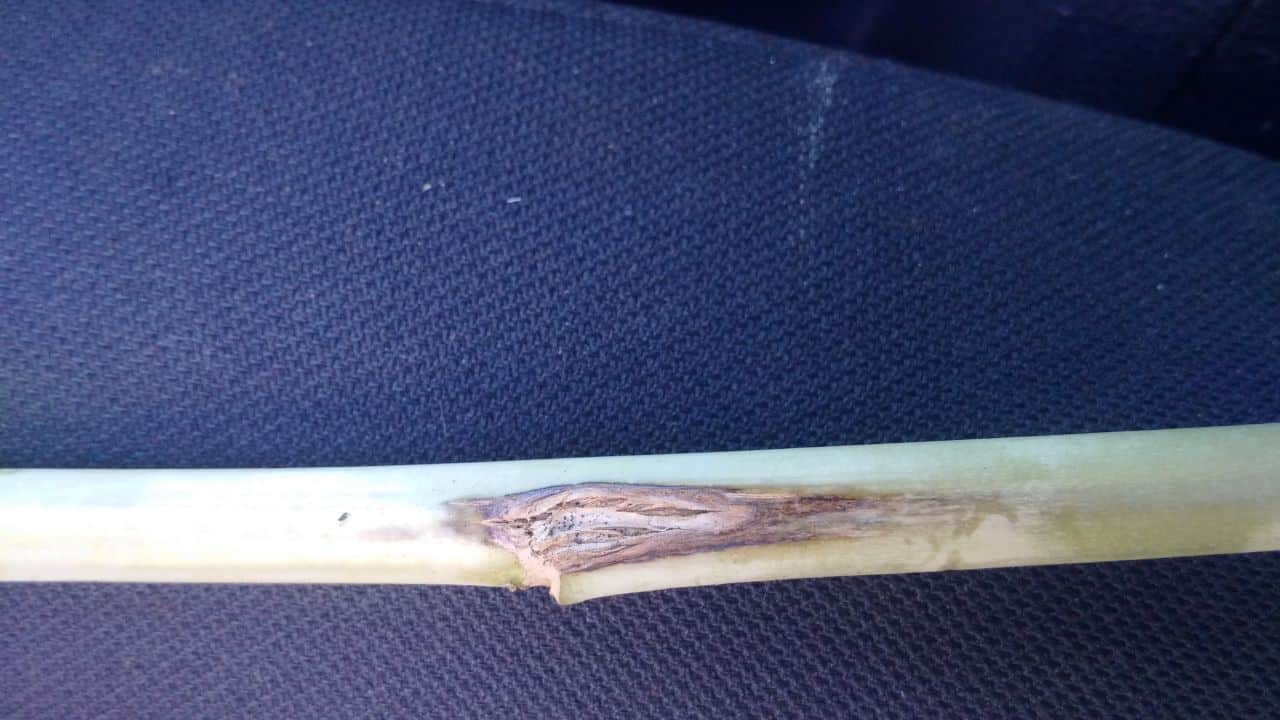
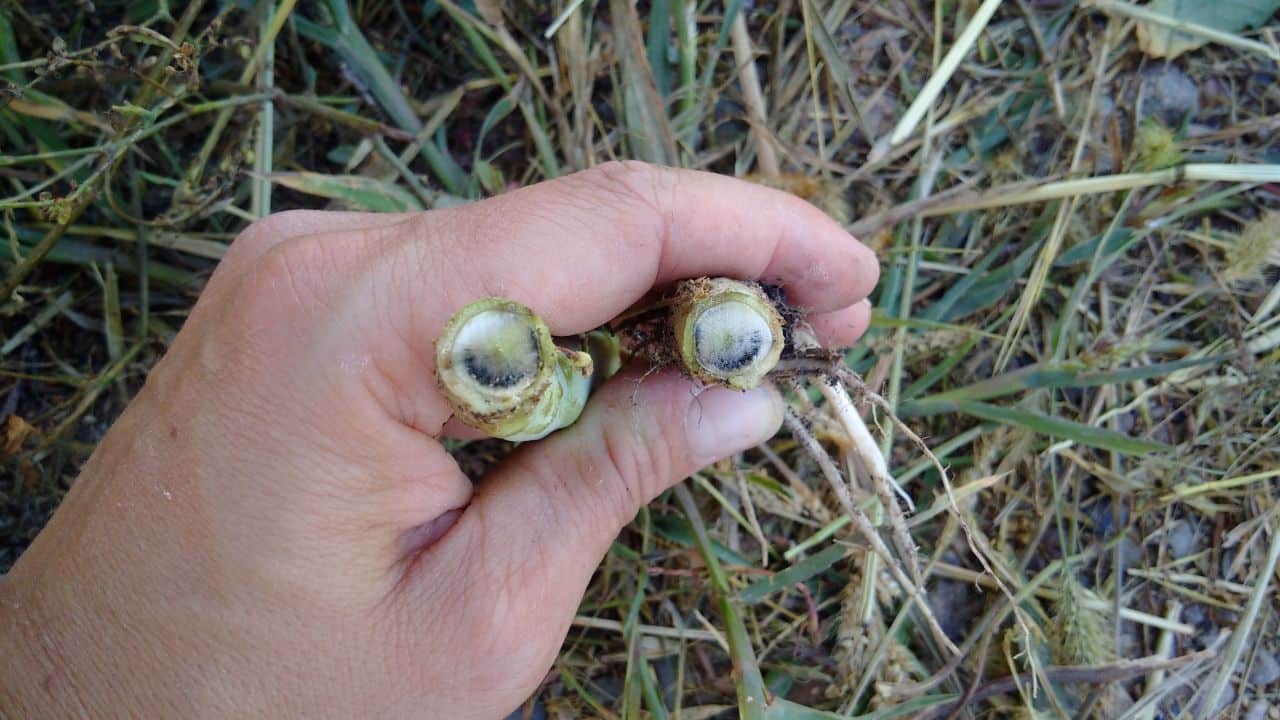 Photo credit: Angela Brackenreed
Photo credit: Angela Brackenreed
o Sclerotinia: Sclerotinia stem rot develops late in the season, with the first visual symptoms appearing by the end of flowering. The stems of infected plants eventually bleach, taking on a whitish appearance and infected tissues tend to shred apart and shatter very easily (as shown in the photo). In high humidity a white mold may be found on infected plant parts. With large lesions the stem is often hollow and may contain the hard, black resting bodies known as sclerotia. Sclerotia may be small and round to long and cylindrical, ovoid or irregular in shape. . Sclerotinia lesions will be bleached white but will lack the black spots or pycnidia that are associated with blackleg lesions.
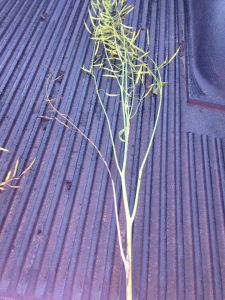 Photo credit: Angela Brackenreed
Photo credit: Angela Brackenreed
o Clubroot: Above the ground, clubroot infected canola plants may look very similar to canola suffering from other diseases or environmental stresses, such as heat, drought or other factors, so proper diagnosis should always include digging up plants to check for gall formation on roots (as shown below). Hybridization nodules on canola roots, although rare, could be confused with clubroot galls. These are small, round nodules located at root nodes and, like healthy roots, are uniformly dense inside, while the interior texture of a clubroot gall is spongy or marbled.
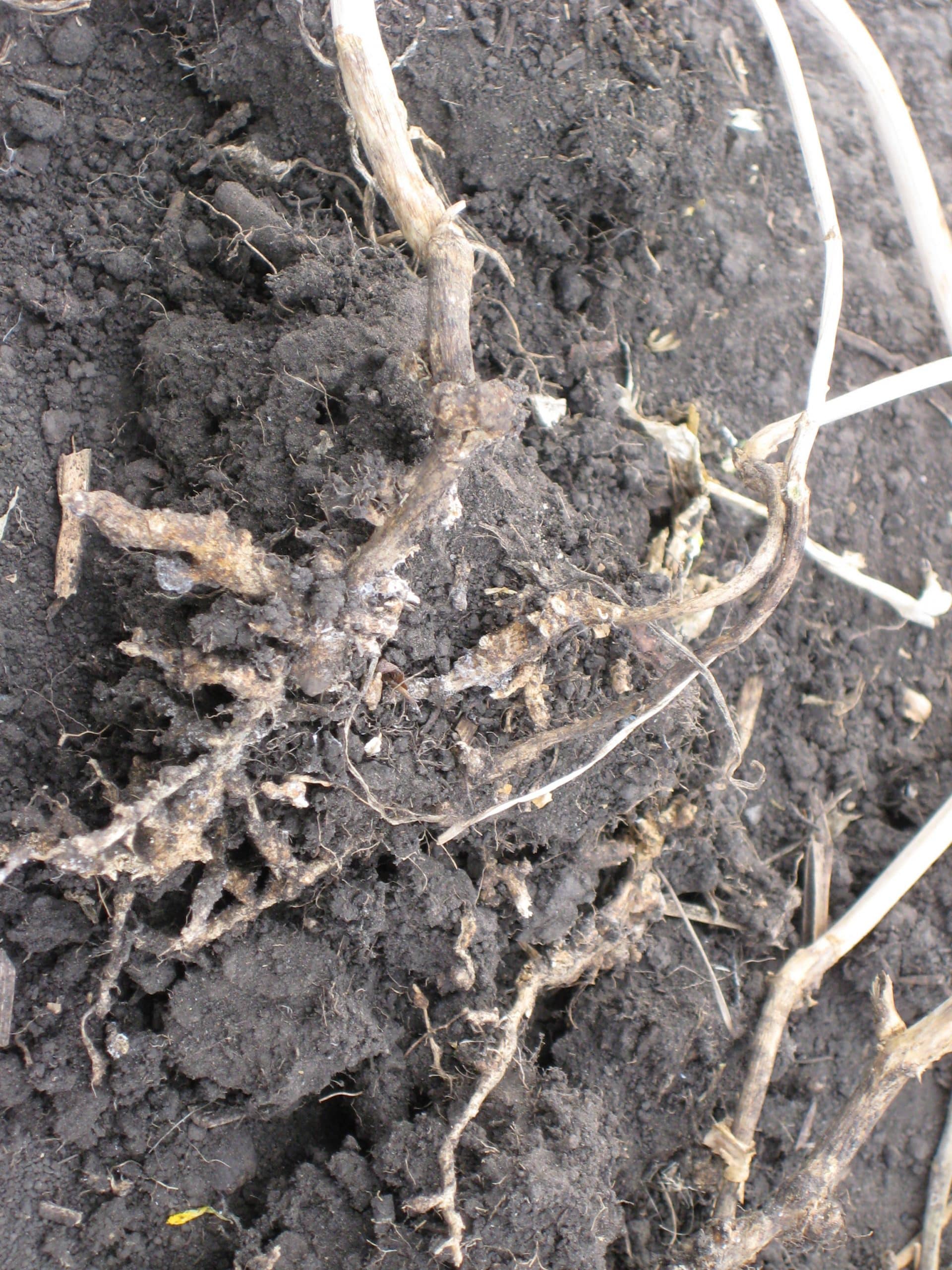
o Alternaria: Alternaria black spot disease can cause symptoms in later growth stages on leaves, leaf petiole, stem, flowers, pods and seeds. Stem and pod lesions first appear as small brown or black dots that may develop into conspicuous spots or longer and wider lesions of various shapes and the upper part of the stems and pods may wither (see image below). Pods may show sunken, dark brown to black circular lesions. Infected pods may ripen prematurely and shatter while the crop is standing or in the swath.
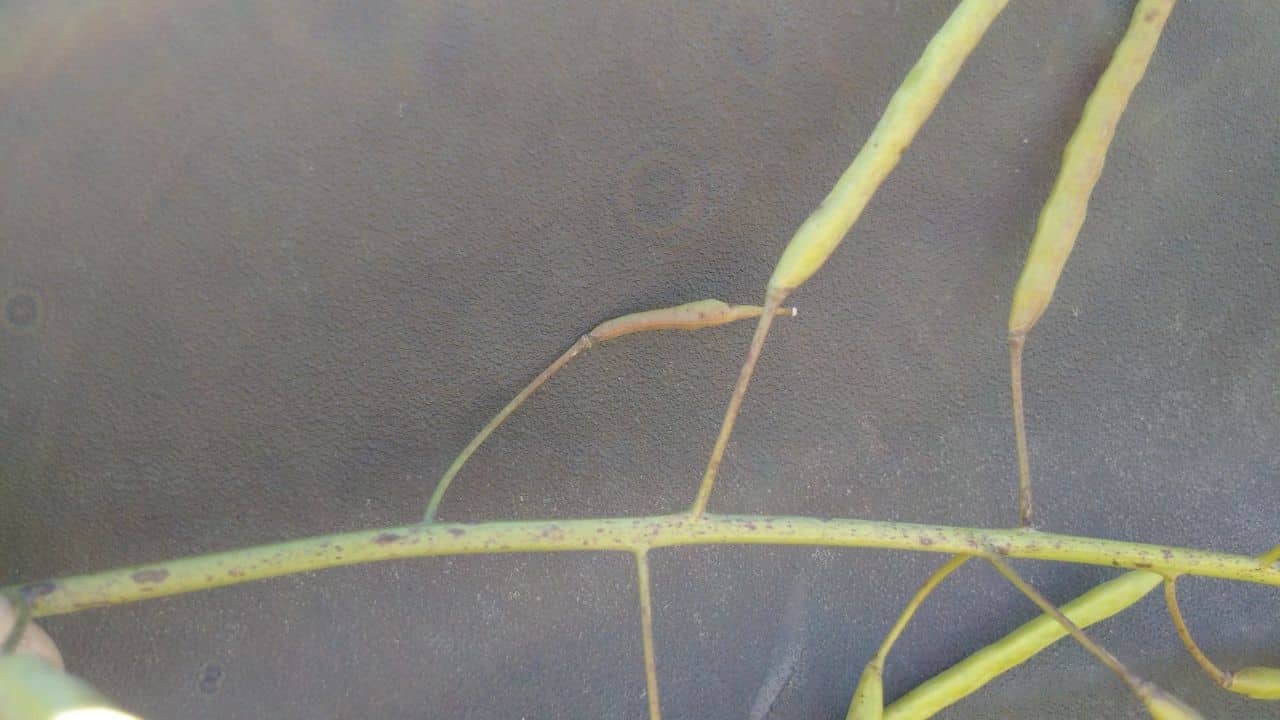 Photo credit: Angela Brackenreed
Photo credit: Angela Brackenreed
o Verticillium wilt: Verticillium wilt can cause the crop to show signs of stunting and premature senescence, with faint black (vertical) striping on the stems which, when rubbed can appear darker and more obvious. By peeling back the epidermis and outer cortex of the stem, blackening can be seen on the inside of the stem, and eventually microsclerotia.
While there may be shredding of the stem similar to sclerotinia stem rot, the large sclerotia and hollowing inside the stem will distinguish Sclerotinia from the tiny microsclerotia of Verticillium wilt. While the discoloured stem and premature ripening could also be symptomatic of blackleg, cutting the stem at ground level and observing the cross-section of the stem will clarify.
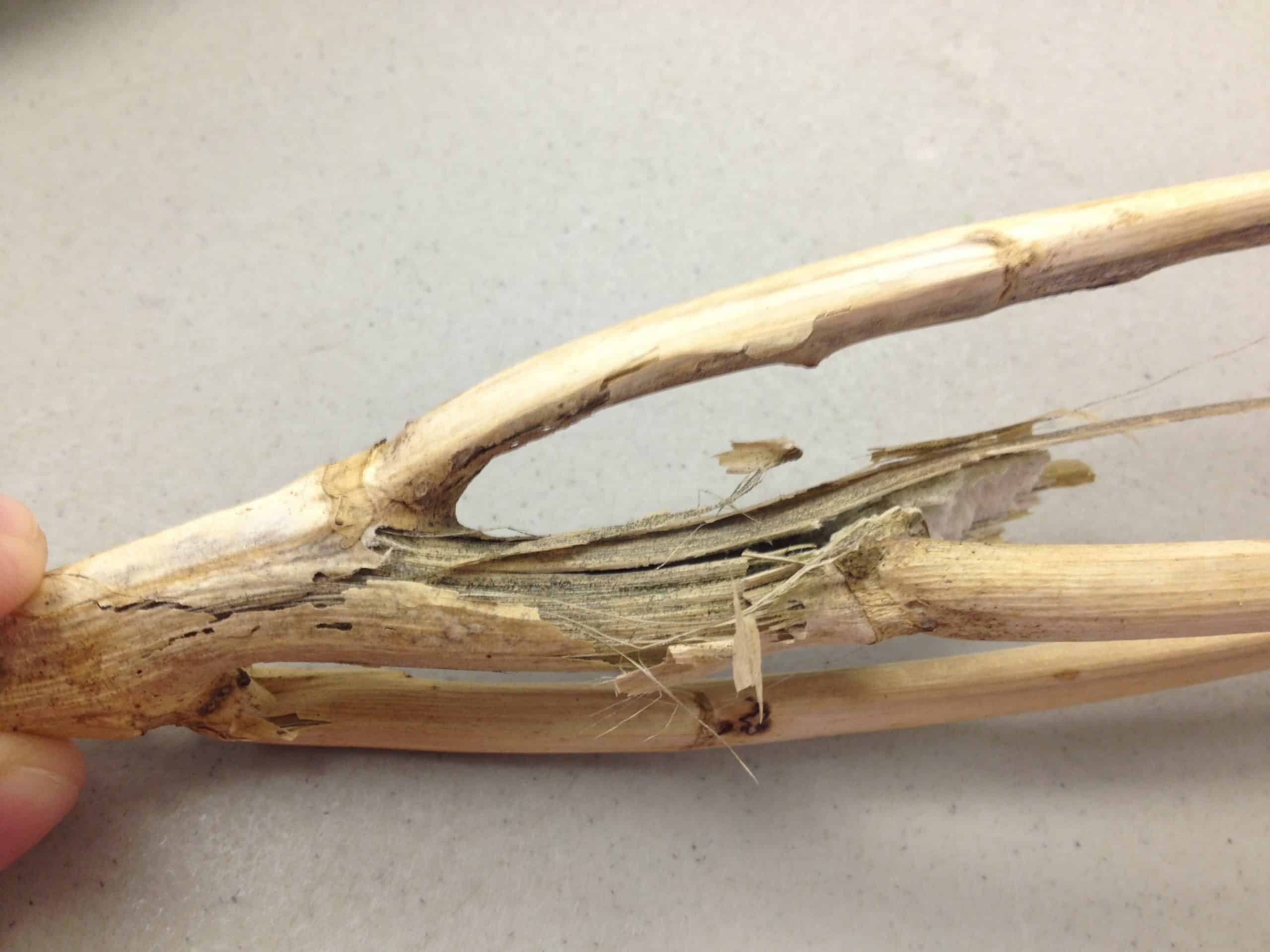 Photo credit: MAFRD
Photo credit: MAFRD
o Always note: While a prematurely ripened area can be a symptom of disease, in doesn’t necessarily mean it has to be. Have a look! It could be disease in a low area, or it could just be due to natural field variability. If all else fails, call your closest CCC agronomist! They’re happy to help!
